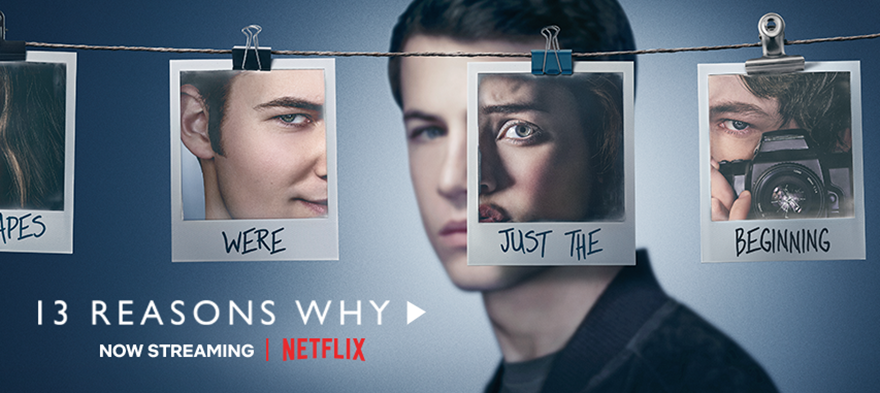
May 1, 2019 12:00:00 AM
by Erika Sanzi
Last year mental health experts, school counselors and parents were sounding the alarm on the wildly popular Netflix series, “13 Reasons Why,” because of concerns over graphic rape and suicide scenes. While the show is rated for a mature audience, it directly targets middle schoolers.
Parents and educators were blindsided by the captivating series’ existence, let alone the fact that their seventh-graders were watching it on phones and tablets, totally cut off from the grown ups who love them. Many parents did not even know their children had watched the series until after receiving warning emails from their school districts or reading articles and blogs written by concerned mental health experts and parents. School counselors found themselves inundated with students who became anxious and reported being “terrified about going to high school.”
In anticipation of the series’ season three release, there is now compelling evidence that those early alarm bells were warranted. According to a study published Monday in the Journal of the American Academy of Child and Adolescent Psychiatry, [pullquote position="right"]there was a 28.9% increase in suicide among Americans aged 10-17 in the month following the show's debut[/pullquote] in March 2017.“The number of suicides was greater than that seen in any single month over the five-year period researchers examined.”
A staggering—and scary—example of “we told you so.”
Lead author Jeff Bridge said an additional analysis found the April 2017 suicide rate was higher than in the previous 19 years and that “the creators of the series intentionally portrayed the suicide of the main character. It was a very graphic depiction of the suicide death.” This, he noted, can lead to suicidal behavior.
“The results of this study should raise awareness that young people are particularly vulnerable to the media,” the study’s co-author, Lisa Horowitz, said in a statement. “All disciplines, including the media, need to take good care to be constructive and thoughtful about topics that intersect with public health crises.”
And this is where Netflix has failed. I say that as someone who found the series absolutely captivating. But I’m 45. It haunts me to think of vulnerable tweens and teens watching episode after episode that glamorizes suicide in a way that we know is extremely dangerous for some kids.
[pullquote]Suicide contagion is real, teen suicide rates are climbing, and Netflix and other entertainment providers need to own the role they may be playing in that.[/pullquote] They will likely claim they have tried by adding warnings, suicide hotline information, and post-show discussions but we need to ask ourselves if that’s enough. But let’s be honest—who is going to pause the binge to watch a panel discussion when every episode leaves you hanging, desperate to know what happens next? Simple answer is nobody. And Netflix knows that.
Netflix obviously did not embark on the TV adaptation of Jay Asher’s book with the goal or intention of making parenting and running schools harder. But that’s what happened. They did not set out to cause alarm throughout the mental health community. But that’s what they did. And they certainly did not hope to see a spike in teen suicide the month after the series’ release—but that is precisely what happened.
The media giant’s CEO Reed Hastings has shrugged off criticism from advocacy groups, including the Parents Television Council, about the series renewal for a third season but it’s hard to see how his dismissive statement in front of shareholders last year can possible suffice in light of this suicide study. His statement was that “13 Reasons Why has been enormously popular and successful. It’s engaging content. It is controversial. But nobody has to watch it.” That is not good enough, Mr. Hastings. Not even close.
Perhaps Marc Porter Magee of the education advocacy organization 50-Can said it best, on Twitter, of all places.
In a series of tweets Marc shared his thoughts, “We somehow need to grapple with what happens to our kids when the companies targeting them seemingly have no guardrails other than engagement metrics. Hopefully the era of tech companies adopting a devil-may-care attitude towards the impact of their decisions on kids and communities is giving way to something more responsible. We’ll see. And the response “It’s engaging content. It is controversial. But nobody has to watch it” doesn’t cut it when we are talking about people’s kids.”
Erika Sanzi is a mother of three sons and taught in public schools in Massachusetts, California and Rhode Island. She has served on her local school board in Cumberland, Rhode Island, advocated for fair school funding at the state level, and worked on campaigns of candidates she considers to be champions for kids and true supporters of great schools. She is currently a Fordham senior visiting fellow.
The story you tell yourself about your own math ability tends to become true. This isn’t some Oprah aphorism about attracting what you want from the universe. Well, I guess it kind of is, but...
If you have a child with disabilities, you’re not alone: According to the latest data, over 7 million American schoolchildren — 14% of all students ages 3-21 — are classified as eligible for special...
The fight for educational equity has never been just about schools. The real North Star for this work is providing opportunities for each child to thrive into adulthood. This means that our advocacy...
Your donations support the voices who challenge decision makers to provide the learning opportunities all children need to thrive.
Ed Post is the flagship website platform of brightbeam, a 501(c3) network of education activists and influencers demanding a better education and a brighter future for every child.
© 2020–2024 brightbeam. All rights reserved.
Leave a Comment